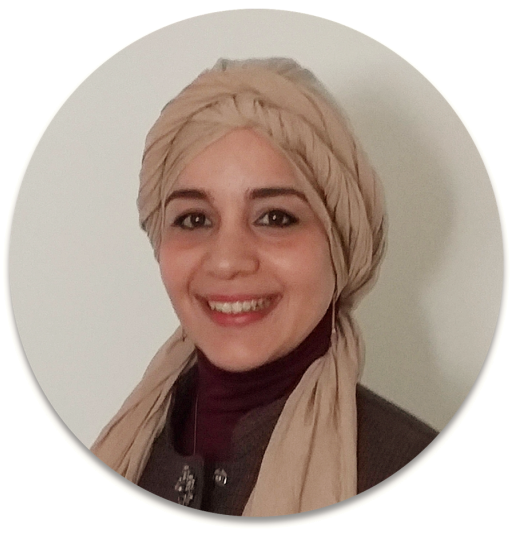Description & Relevance
Context
Big and complex data is fuelling diverse research directions in both medical image analysis and computer vision research fields. These can be divided into two main categories: (1) analytical methods, and (2) predictive methods. While analytical methods aim to efficiently analyse, represent and interpret data (static or longitudinal), predictive methods leverage the data currently available to predict observations at later time-points (i.e., forecasting the future) or predicting observations at earlier time-points (i.e., predicting the past for missing data completion). For instance, a method which only focuses on classifying patients with mild cognitive impairment (MCI) and patients with Alzheimer’s disease (AD) is an analytical method, while a method which predicts if a subject diagnosed with MCI will remain stable or convert to AD over time is a predictive method. Similar examples can be established for various neurodegenerative or neuropsychiatric disorders, degenerative arthritis or in cancer studies, in which the disease/disorder develops over time.
Why predictive intelligence?
It would constitute a stunning progress in the MICCAI research community if, in a few years, we contribute to engineering a ‘predictive intelligence’ which can map both low-dimensional and high-dimensional medical data onto the future with high precision. This workshop is the first endeavor to drive the field of ‘high-precision predictive medicine’, where late medical observations are predicted with high precision, while providing explanation via machine and deep learning, and statistically, mathematically- or physically-based models of healthy, disordered development and ageing. Despite the terrific progress that analytical methods have made in the last twenty years in medical image segmentation, registration or other related applications, efficient predictive intelligent models/methods are somewhat lagging behind. As such predictive intelligence develops and improves —and this is likely to do so exponentially in the coming years— this will have far-reaching consequences for the development of new treatment procedures and novel technologies. These predictive models will begin to shed light on one of the most complex healthcare and medical challenges we have ever encountered, and, in doing so, change our basic understanding of who we are.
What kind of research problems we aim to solve?
The main aim of PRIME-MICCAI is to propel the advent of predictive models in a broad sense, with application to medical data. Particularly, the workshop will admit 12-page papers describing new cutting-edge predictive models and methods that solve challenging problems in the medical field. We hope that PRIME workshop becomes a nest for high-precision predictive medicine, one that is set to transform multiple fields of healthcare technologies in unprecedented ways.
Topics of interests include but are not limited to predictive methods dedicated to the following topics:
- Modeling and predicting disease development or evolution from a limited number of observations;
- Computer-aided prognostic methods (e.g., for brain diseases, prostate cancer, cervical cancer, dementia, acute disease, neurodevelopmental disorders);
- Forecasting disease/cancer progression over time;
- Predicting low-dimensional data (e.g., behavioral scores, clinical outcome, age, gender);
- Predicting the evolution or development of high-dimensional data (e.g., shapes, graphs, images, patches, abstract features, learned features);
- Predicting high-resolution data from low-resolution data;
- Prediction methods using 2D, 2D+t, 3D, 3D+t, ND and ND+t data;
- Predicting image modality from a different modality (e.g., data synthesis);
- Predicting lesion evolution;
- Predicting missing data (e.g., data imputation or data completion problems).
- Predicting clinical outcome from medical data (genomic, imaging data, etc).
In-brief
This workshop will mediate ideas from both machine learning and mathematical/statistical/physical modeling research directions in the hope to provide a deeper understanding of the foundations of predictive intelligence developed for medicine, as well as to where we currently stand and what we aspire to achieve through this field. PRIME-MICCAI 2021 will feature a single-track workshop with keynote speakers with deep expertise in high-precision predictive medicine using machine learning and other modeling approaches —which are believed to stand at opposing directions. Our workshop will also include technical paper presentations, poster sessions, and demonstrations. Eventually, this will help steer a wide spectrum of MICCAI publications from being ‘only analytical’ to being ‘jointly analytical and predictive’.
Organizers
Keynote Speakers
Short bio: Dr. Luping Zhou is a faculty member in School of Electrical and Information Engineering, The University of Sydney. She obtained her PhD from Australian National University and got her post-doctoral training in University of North Carolina at Chapel Hill. Dr. Zhou works on the interface of medical image analysis, machine learning, and computer vision, and has published 100+ research papers in these fields. Her current research is focused on medical image analysis with statistical graphical models and deep learning, as well as general visual recognition problems. She was a recipient of the prestigious ARC (Australian Research Council) DECRA award (Discovery Early Career Researcher Award). Dr. Zhou is the Associate Editor of the journals IEEE Trans. on Medical Imaging (TMI), Pattern Recognition and Neurocomputing. She is a Senior Member of IEEE.
Short bio: Ben Glocker is Reader in Machine Learning for Imaging at the Department of Computing at Imperial College London where he co-leads the Biomedical Image Analysis Group. He also leads the HeartFlow-Imperial Research Team and is scientific advisor for Kheiron Medical Technologies. He holds a PhD from TU Munich and was a postdoc at Microsoft and a Research Fellow at the University of Cambridge. His research is at the intersection of medical imaging and artificial intelligence aiming to build computational tools for improving image-based detection and diagnosis of disease.
Short bio: Aasa Feragen is a Full Professor at the Danish University of Technology. Her MSc and PhD in mathematics are both from the University of Helsinki, following which she held postdocs at the University of Copenhagen, and the MPI for Intelligent Systems in Tübingen. Aasa's research sits at the intersection of machine learning, applied geometry and medical imaging, where Aasa takes a particular interest in the modelling of data with geometric constraints or invariants. Such data includes graphs and trees, curves, surfaces, probability distributions, fairness constraints -- and a wealth of other examples. Aasa contributes actively to community building and maintenance, including as program chair of MICCAI (2024), IPMI (2021) and MIDL (2019).
Program Committee Members
Ahmed Nebli, Forschungszentrum Jülich, Germany
Alaa Bessadok, University of Sousse, Tunisia
Changqing Zhang, Tianjin University, China
Dong Hye Ye, Marquette University, USA
Duygu Sarikaya, Gazi University, Turkey
Febrian Rachmadi, RIKEN, Japan
Gang Li, University of North Carolina,USA
Heung-Il Suk , Korea University, Korea
Ilwoo Lyu, Vanderbilt University, USA
Islem Mhiri, Université de Sousse, Tunisia
Jaeil Kim, Kyungpook National University (KNU), Korea
Le Lu, PAII Inc., USA
Lichi Zhang, Shanghai Jiao Tong University, China
Manhua Liu, Shanghai Jiao Tong University, China
Maria Deprez, King’s College London, UK
Maria A. Zuluaga, EURECOM, France
Mayssa Soussia, University of North Carolina at Chapel Hill, USA
Minjeong Kim, University of North Carolina at Greensboro, USA
Pew-Thian Yap, University of North Carolina (UNC), USA
Qian Wang, Shanghai Jiao Tong University, China
Qingyu Zhao, Stanford University, USA
Robert Jenssen, UiT – The Arctic University of Norway, Norway
Seung Yeon Shin, National Institutes of Health, USA
Ulas Bagci, University of Central Florida (UCF), USA
Victor Gonzalez, Universidad de León, Spain
Xioaxioa Li, Princeton University, USA
Yu Zhang, Stanford University, USA
Ziga Spiclin, University of Ljubljana, Slovenia
Submission
The number of pages can range between 8 and 12 pages including references. Papers should be formatted in Springer LNCS style. PRIME reviewing is double-blind.
For paper submission, please use the following link: https://cmt3.research.microsoft.com/PRIME2021
To download PRIME 2021 flyer, click here.
Key dates:
Full Paper Deadline: June 20, 2021; 11:59 PM EST, extended to July 1, 11:59 PM EST
Notification of Acceptance: July 24, 2021
Camera-ready Version: July 31, 2021, 11:59 PM PST
Workshop date: October 1, 2021
Submission instructions:
Papers should be submitted electronically following the guidelines for authors and LaTeX and MS Word templates available at Lecture Notes in Computer Science, double blind review). Manuscripts should be up to 12 pages and submitted via the PRIME submission website. No modifications to the templates are permitted. Failure to abide by the formatting guidelines will result in immediate rejection of the paper. The papers will be evaluated by three external reviewers or potential inclusion in the scientific program of PRIME-MICCAI.
We have also included a checklist for paper reproducibility.
Instructions for submitting your camera-ready paper:
Please make sure to upload a zip file including the following documents:
1. The final camera-ready PDF of your paper.
2. All original files required to generate the final PDF. If you are using Latex, please make sure to include .tex, .bib, figures, and any other files for compiling the tex file. If you are using Word, please upload the docx file.
3. Please fill out the Springer copyright form which can be found using this link: https://basira-lab.com/prime2021-lncs-copyright-form/
Please make sure that the copyright forms have been filled out correctly before uploading the zip file.
The paper length can vary between 8 and 12 pages.
Finally, please upload only one zip (not rar) file with everything included (using your paper submission ID, for example: PRIME21-32.zip, where 32 is your paper ID number).
MELBA special issue:
The best selected papers will be invited to submit an extended version for the MELBA journal (https://www.melba-journal.org/).
SPECIAL PRIME 2021: Talented minority scholarship to register accepted PRIME papers by students in low-middle income countries (LMIC).
-We offer scholarships supported by BASIRA Lab to register accepted PRIME papers if the first author is a student at a University in a low-middle income country. If the rank of your country is larger or equal to 50 based on expenditure on R&D sorted in decreasing order, then you are eligible:
https://en.wikipedia.org/wiki/List_of_countries_by_research_and_development_spending
Program
To access the tentative program for PRIME-MICCAI 2021, please click on: PRIME MICCAI 2021 Program
Click here to download the PRIME Zoom background.







